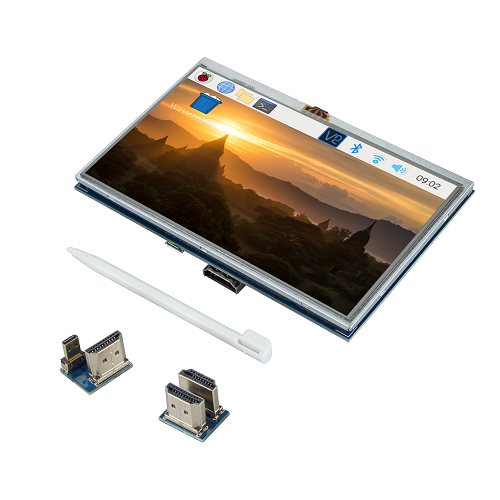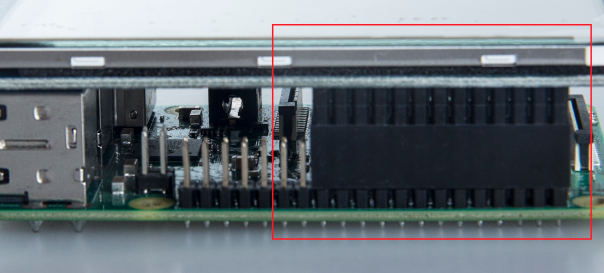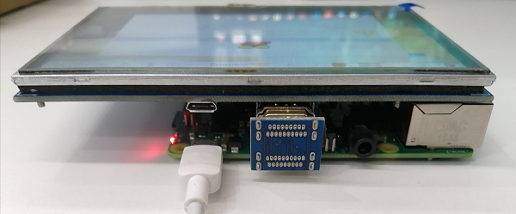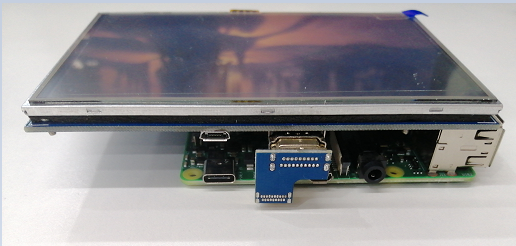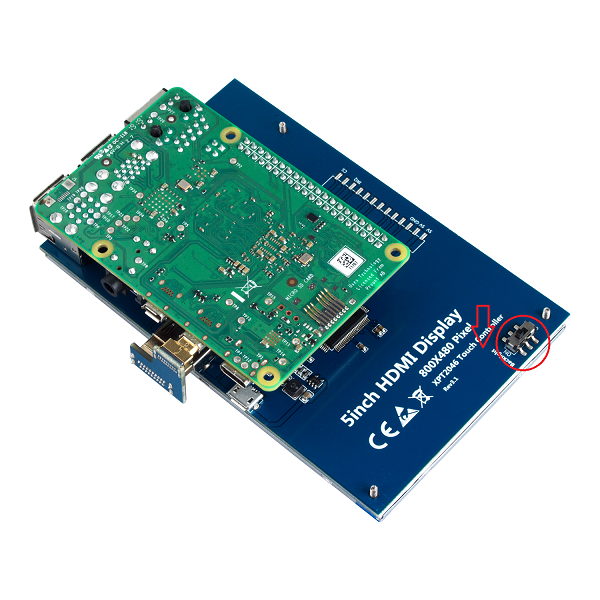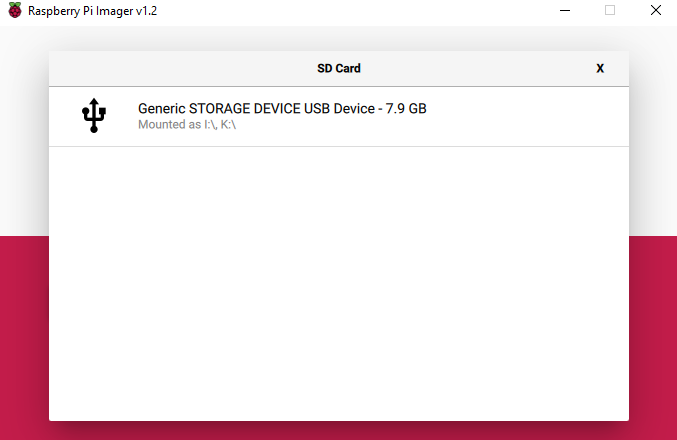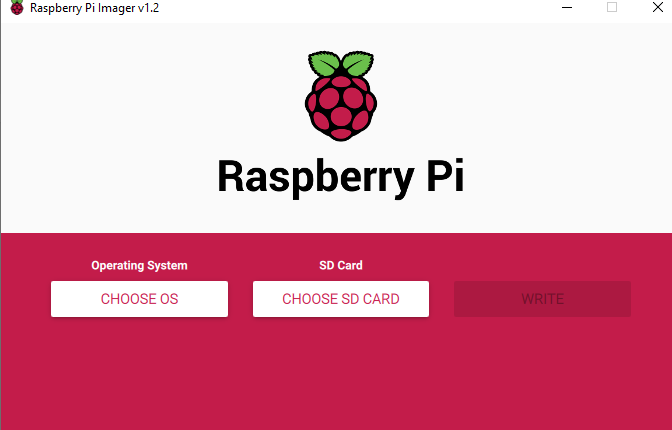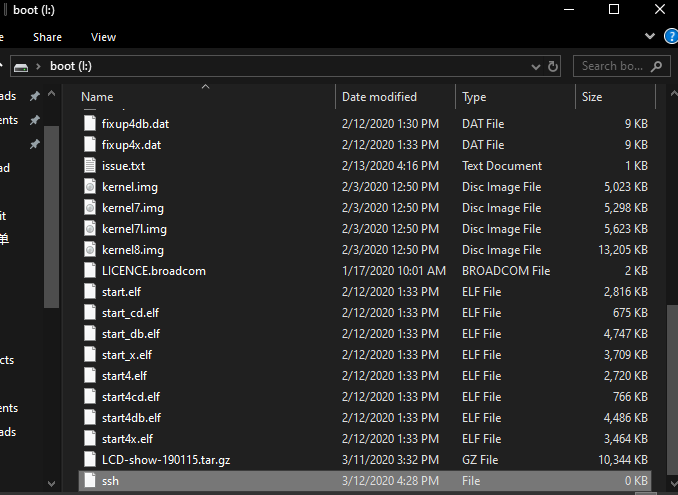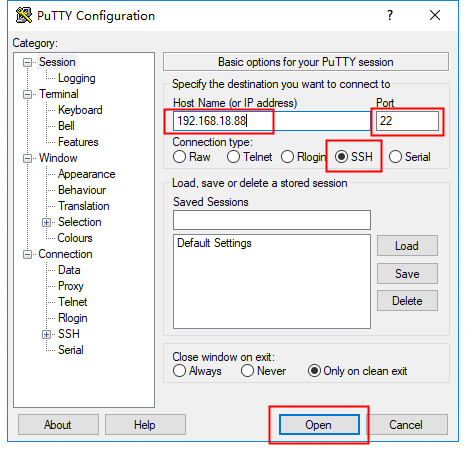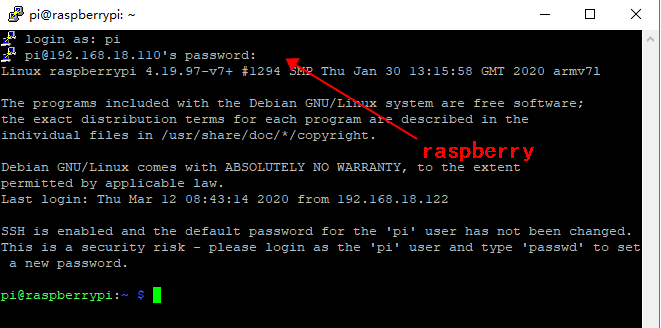Difference between revisions of "Raspberry pi 4B 5" hdmi LCD touchscreen(800x480)"
(Created page with "=Introduction= File:Sc002-4.png<br> A good solution for those who seek for a bigger LCD display. This 5 inch LCD Touchscreen fits snuggly on top of the Raspberry Pi, pract...") |
|||
| (3 intermediate revisions by the same user not shown) | |||
| Line 1: | Line 1: | ||
=Introduction= | =Introduction= | ||
| − | [[File: | + | |
| + | [[File:Sc006-1.png]]<br> | ||
| + | |||
A good solution for those who seek for a bigger LCD display. This 5 inch LCD Touchscreen fits snuggly on top of the Raspberry Pi, practically form fitting on top of it so as not to compromise the over all dimensions of the credit card sized single board computer. The resistive touchscreen provides you with an easy way to display information coming off of the Raspberry Pi and the OS currently running on it.<br> | A good solution for those who seek for a bigger LCD display. This 5 inch LCD Touchscreen fits snuggly on top of the Raspberry Pi, practically form fitting on top of it so as not to compromise the over all dimensions of the credit card sized single board computer. The resistive touchscreen provides you with an easy way to display information coming off of the Raspberry Pi and the OS currently running on it.<br> | ||
| + | |||
The 4:3 aspect ratio backlit LCD equipped on this HAT possesses a resolution of 800 by 480 pixels with over 65 thousand colors and an HDMI interface. The back light switch of this LCD touch screen HAT can be turned off to lower power consumption. Simply plug the 13x2 GPIO header into your desired Raspberry Pi and you'll be able to start using your new resistive touch screen!<br> | The 4:3 aspect ratio backlit LCD equipped on this HAT possesses a resolution of 800 by 480 pixels with over 65 thousand colors and an HDMI interface. The back light switch of this LCD touch screen HAT can be turned off to lower power consumption. Simply plug the 13x2 GPIO header into your desired Raspberry Pi and you'll be able to start using your new resistive touch screen!<br> | ||
| + | |||
=Feature List= | =Feature List= | ||
| Line 25: | Line 29: | ||
'''Required Preparation''' <br> | '''Required Preparation''' <br> | ||
| − | * | + | *Raspberry Pi 3B/3B+/4B<br> |
| − | * | + | *Raspberry Pi Power Adapter<br> |
| − | * | + | *Network Cable (it's for RPi system installation and you can ignore it if you have finished.)<br> |
| − | * | + | *Card Reader: (it's for RPi system installation and you can ignore it if you have finished.)<br> |
| − | * | + | *SD card (a recommended 8g and higher one) (it's for RPi system installation and you can ignore it if you have finished.)<br> |
| Line 35: | Line 39: | ||
=Hardware Operation= | =Hardware Operation= | ||
*Align the pins on the right to connect the RPi with the screen; meanwhile, insert the SD card and plug the power cable.<br> | *Align the pins on the right to connect the RPi with the screen; meanwhile, insert the SD card and plug the power cable.<br> | ||
| + | |||
| + | [[File:Sc006-5.png]]<br> | ||
| + | |||
*Select the corresponding hdmi adapter and connect it according to the type of Raspberry Pi, as shown below.<br> | *Select the corresponding hdmi adapter and connect it according to the type of Raspberry Pi, as shown below.<br> | ||
| + | |||
| + | [[File:Sc006-3.png]]<br> | ||
| + | |||
| + | [[File:Sc006-4.png]]<br> | ||
| + | |||
| + | *Toggle the switch to "on". | ||
| + | |||
| + | [[File:Sc006-2.png]]<br> | ||
| + | |||
=Software Operation= | =Software Operation= | ||
| Line 56: | Line 72: | ||
2. Download the driver file [http://wiki.sunfounder.cc/images/7/70/LCD-show-190115.tar.gz LCD-show190115.tar.gz] and copy to /boot.<br> | 2. Download the driver file [http://wiki.sunfounder.cc/images/7/70/LCD-show-190115.tar.gz LCD-show190115.tar.gz] and copy to /boot.<br> | ||
| − | [[File: | + | [[File:Cam003-3.png]]<br> |
2. Connect the RPi & the screen. Align the pin header on the RPi with that on the screen. At the same time, take out the SD card from the card reader to insert it into the SD slot on RPi. Then plug the RPi power adapter and network cable. | 2. Connect the RPi & the screen. Align the pin header on the RPi with that on the screen. At the same time, take out the SD card from the card reader to insert it into the SD slot on RPi. Then plug the RPi power adapter and network cable. | ||
Latest revision as of 08:57, 10 April 2020
Contents
Introduction
A good solution for those who seek for a bigger LCD display. This 5 inch LCD Touchscreen fits snuggly on top of the Raspberry Pi, practically form fitting on top of it so as not to compromise the over all dimensions of the credit card sized single board computer. The resistive touchscreen provides you with an easy way to display information coming off of the Raspberry Pi and the OS currently running on it.
The 4:3 aspect ratio backlit LCD equipped on this HAT possesses a resolution of 800 by 480 pixels with over 65 thousand colors and an HDMI interface. The back light switch of this LCD touch screen HAT can be turned off to lower power consumption. Simply plug the 13x2 GPIO header into your desired Raspberry Pi and you'll be able to start using your new resistive touch screen!
Feature List
- For Raspberry Pi 4 Model B
- Screen Size:5
- Resolution:800*480
- Type:TFT
- Resistive Touch Screen
- XPT2046 Touch Screen Controller
- HDMI interface: for HDMI transmission
- Backlight switch: turn on/off the backlight to save power
- Dimension:121.11×77.93mm
- Power Consumption: 5V 0.34A
Preparation
Product List
- 1 x 5 Touch Screen
- 1 x Micro HDMI to HDMI Adapter
- 1 x Touch Pen
Required Preparation
- Raspberry Pi 3B/3B+/4B
- Raspberry Pi Power Adapter
- Network Cable (it's for RPi system installation and you can ignore it if you have finished.)
- Card Reader: (it's for RPi system installation and you can ignore it if you have finished.)
- SD card (a recommended 8g and higher one) (it's for RPi system installation and you can ignore it if you have finished.)
Hardware Operation
- Align the pins on the right to connect the RPi with the screen; meanwhile, insert the SD card and plug the power cable.
- Select the corresponding hdmi adapter and connect it according to the type of Raspberry Pi, as shown below.
- Toggle the switch to "on".
Software Operation
Step1: Download RPi system
1. Click in to access the Raspberry Pi official website https://www.raspberrypi.org/downloads/,and then select to download the image you need according to your compute types (windows/MAC/Ubuntu).
2. After downloading, click to start the installation of imager.exe. The RPi Imager page appears when the installation is done. You need to click CHOOSE OS then on the new page,select the first one.
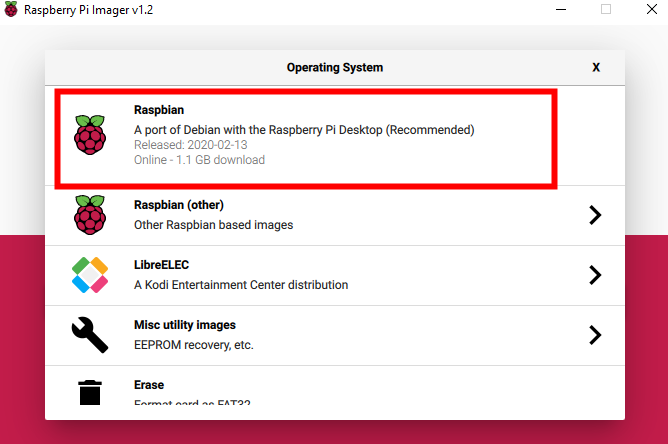
3. Insert the SD card in the card reader then plug the card reader into the computer. You should click CHOOSE SD CARD to let the following SD Card page appear. Now, select the SD card information bar. Back to the RPi page and click WRITE to download and flash the RPi system.
Step2: Driver Installation
1. Create an empty file named "ssh" without a suffix in the directoy /boot.
2. Download the driver file LCD-show190115.tar.gz and copy to /boot.
2. Connect the RPi & the screen. Align the pin header on the RPi with that on the screen. At the same time, take out the SD card from the card reader to insert it into the SD slot on RPi. Then plug the RPi power adapter and network cable.
3. The RPi starts as soon as it's connected to the power supply. Next, you can find your RPi ip.
- i. Check the RPi ip via Advanced IP Scanner.
- ii. Advanced IP Scanner download link: https://filehippo.com/download_advanced_ip_scanner/
- iii: You can use router management page to check the wired connection.
4. Plug the internet cable and the sd card into RPi, then connect the RPi to the power supply.Now, you can find your RPi ip on the RPi management page.
- Got the ip, you can use putty tool to control RPi remotely via ssh remote connection. Note: The password characters are hidden when you are entering.
5. Type in the following commands in order. Press "Enter" once each time you've finished one line.
cd /boot sudo tar zxvf LCD-show-190115.tar.gz cd LCD-show/ sudo ./LCD5-show
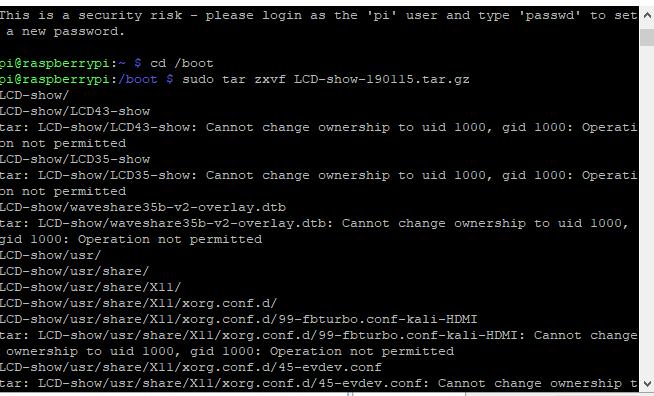
The above commands executed, the system restarts automatically for display and touch in good condition.
